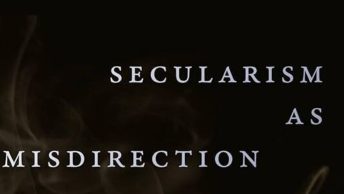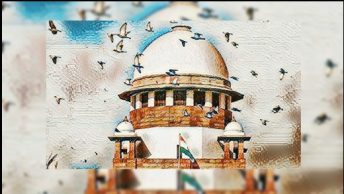Ed Note: As part of our New Scholarship Section, we have been inviting discussants to respond to specific articles. This is part of a series of posts discussing the public law themed research articles featured in Issue 2 of the 2020 Volume of the Indian Law Review. You can access all the posts in this discussion here. We are grateful to Apurva Thakur for accepting our invitation to respond to the paper titled “Arbitrariness, Subordination and Unequal Citizenship” by Dr. Farrah Ahmed. One can read the short summary of the paper by Dr. Ahmed here. ]
It is an honour to respond to Dr Ahmed’s compelling research paper entitled “Arbitrariness, subordination and unequal citizenship”. My paper on the Citizenship Amendment Bill, 2016 explores largely similar themes and as such, I would be compelled to express my ardent support and complete agreement with the primary premise of her Paper; that the Citizenship Amendment Act 2019 (CAA, 2019) is patently arbitrary.
The CAA 2019, has three key aspects, which may be summarized as follows:
- Persons from religious minority communities from the neighboring states of India, which have Islam as the state religion, have been given certain relaxations with regard to qualification of citizenship. The CAA 2019 further goes on to list the protected, persecuted minorities.
- The number of years of requirement for obtaining citizenship has been decreased for such listed religious minorities from 11 to 6 years. The cutoff date for the same has been fixed, at 31st December 2014.
- The status of Overseas Citizen of India (OCI) has been altered.
For the purposes of a streamlined discussion, I will not consider the OCI status, since it falls beyond the scope of this response piece.
Dr Ahmed’s paper outlines the procedure for grant of Indian citizenship- through the Constitution of India, 1950, the Citizenship Act, 1955 and the various rules related citizenship in India. As observed by Dr Ahmed, the entire set of ‘Citizenship Legislations’, have an undercurrent of religiosity. This colour of religion is palpable in the Constituent Assembly debates as well, since at that moment, India was undergoing a bloody and traumatic partition. Constitutional history has an important and often overlooked effect on shaping the ideology of a nation. This historical baggage often has a way of playing out as legislations and examples of it are found in all Citizenship legislations in India. It is true, as Dr Ahmed has mentioned in her paper that India has often used religion- explicitly or implicitly to determine who can be granted Indian citizenship.
The CAA, 2019 has garnered reactions from all quarters and rightly so. According to the Democracy Index 2020, India has fallen to the 51st position, dropping 10 points since 2018. Furthermore, in its annual report, the U.S. Commission on International Religious Freedom, placed India as a ‘country of particular concern’, primarily citing the CAA, 2019. The Indian Government, perhaps correctly, has rejected such findings and asserted that as a sovereign nation, India has absolute control over who it can or cannot grant citizenship. Moreover, the stand of the PMO has always been that the Act does not alienate Muslim citizens of India, since it is primarily focussed on illegal migrants.
Moreover, India is not a signatory to the 1951 Refugee Convention and hence is not obligated to follow the principles set out therein; but does that, alone make the CAA, 2019 valid? The Indian government has often relied on the highly emotive and misleading argument of India being the only country for Hindus. This argument is specious and political, unsupported by either religion or history.
Further, Dr Ahmed’s assertion that the burden of proof on the illegal migrant will be used as a tool to filter out citizens, seems to be premature. Burden of proof is on the illegal migrant, irrespective of religion. Moreover, the illegal migrant will have to categorically prove personal ‘religious persecution’ by the state. This in no manner is an easy feat, if one takes into account the tests laid down under international treaties to determine ‘persecution’. To show religious persecution, an individual has to show well-founded fear and as such, the burden of proof remains alike and no religion has a presumption in favour of persecution. I believe that the burden of proof argument does not meet the criteria to be dismissed as arbitrary, under Article. 14 of the Constitution of India. The yet to be framed rules under the CAA 2019 are expected to throw clarity on this issue.
I also believe that the CAA 2019 misses an important opportunity to define citizenship. It does allow the executive to decide who can be detained in the absence of acceptable documents. While this is not outside the purview of delegated legislation, there still seems to be a lack of check on the abuse of such power by the executive. In the absence of any explanation to these powers, it may be considered as ‘excessive’.
I strongly agree with Dr Ahmed’s view that the Citizenship Act, 2019, is arbitrary, primarily on the grounds of Article 14 and the principle of Arbitrariness. The Arbitrariness doctrine that Dr Ahmed’s paper primarily focusses on was first introduced through the EP Royappa judgement in 1974 and was later reformulated as the doctrine of ‘manifest arbitrariness’ by J. RF Nariman in the Shayara Bano case. The tests for arbitrariness are indeed, quite clearly set out through these landmark judgements. That these judgments leave space for further refinement speaks of the far-sightedness of the judiciary. One may want to draw a parallel with the Basic Structure doctrine envisaged through Kesavanada Bharti case. It outlines what is meant by Basic Structure, but leaves the task of enumeration of the components of basic structure to the Judiciary, thereby giving room to subsequent fine-tuning. Similarly, the arbitrariness doctrine sets out the basic rule- that anything that is arbitrary is unconstitutional, however it allows for scope to courts to decide what elements constitute arbitrariness. The explanation of the arbitrary decision based on normative, motivating and purported reasons is aptly done by Dr Ahmed. The observation on the significance of legislative attitudes in identifying and shaping arbitrariness is something that I completely align with.
I would like to add to her argument to state that the CAA 2019 also fails the elementary test set out in Article 14- that of a rational nexus and a reasonable classification. The twofold test laid down by the Supreme Court in State of Madras v. V. G. Row relies on two principles, i.e., reasonable classification and nexus between the object sought to be achieved. The Act fails the reasonable classification, as not all neighbouring countries are included and not all minorities have been considered. The Act also fails the test of reasonable nexus as there is no relation of the provisions of the Act with the purported object of protection of persecuted minorities, since a large number of minorities (atheists, Ahmadis, Bahais etc.) have not been listed. Additionally, the unjustified randomized cut-off date of 31-12-2015 also adds to the blend of arbitrariness and colourable legislation plaguing the CAA 2019. A lucid explanation has been given by Dr Faizan Mustafa, too, on how the CAA 2019 fails the test of classification.
Moreover, the CAA 2019 also fails at the anvil of the Basic Structure Test. The Basic Structure has been used to invalidate not only Constitutional amendments but also statutes and state action. Secularism as understood as ‘sarva dharma sambhav’ in the Indian context has been firmly established as a basic structure in the SR Bommai judgement.
Another argument that can be made against the CAA, 2019 is the deviation from ‘Constitutional Morality’. At present, Constitutional Morality has not been distilled as part of the Basic Structure doctrine; however, reliance on Dr Ambedkar’s Constituent Assembly speech, shows that the idea of Constitutional Morality is implicit and inherent in the Indian Constitution.
Dr Ambedkar quotes Grote:
“By constitutional morality, Grote meant… a paramount reverence for the forms of the constitution, enforcing obedience to authority and acting under and within these forms, yet combined with the habit of open speech, of action subject only to definite legal control, and unrestrained censure of those very authorities as to all their public acts combined, too with a perfect confidence in the bosom of every citizen amidst the bitterness of party contest that the forms of constitution will not be less sacred in the eyes of his opponents than his own.”
Constitutional Morality plays an unsaid role in the doctrines of constitutional interpretations like ‘harmonious construction’ and ‘colourable legislation’; it is underlying in the civic and ideological principles of the Indian Constitution; it is indeed, an invisible thread that binds the Constitution, which sets up the ideals with which India was envisioned. The CAA 2019, steers clear of the same constitutional morality that the Constitution seeks to protect. One hopes that the Supreme Court take note of this morality that the drafters of the Constitution deemed as the ethos and epitome of India.
I am unable to agree with Dr Ahmed’s equating of the National Register of Citizens (NRC) with the CAA 2019 which are fundamentally different. NRC is not based on religion, at all, unlike the CAA, 2019 While the NRC may have, in effect translated into targeting of a particular religion, that is the political fallout, and not within the legal fold.
Dr Ahmed’s use of anti-subordination principle to explain religious discrimination has merit in that this principle has largely been referenced with US Constitution’s Equal Protection clause where some scholars have invoked it to theorize Indian judiciary’s response to caste legislations. Using this principle to also explain religion and minorities is an innovative approach to rationalizing, one that seems sound and rational.
To conclude, Dr Farrah Ahmed’s paper provides a sound theoretical anchor to why the CAA 2019 is arbitrary. She raises interesting points of view and merges the legal with the socio-political. What remains to be seen is the Supreme Court’s perspective on the several pending petitions before it and the consequent governmental response thereto.






Thank you for your sharing. I am worried that I lack creative ideas. It is your article that makes me full of hope. Thank you. But, I have a question, can you help me?